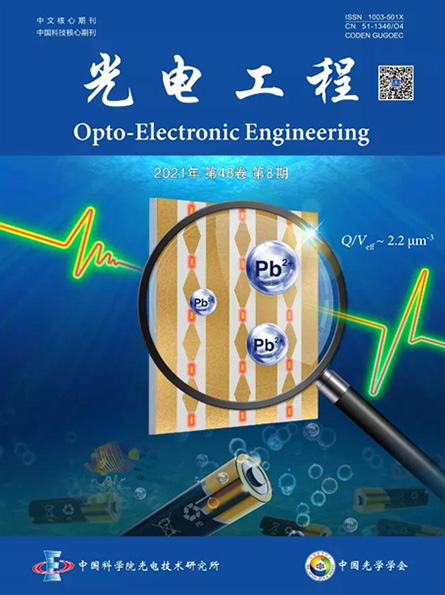 Detection of lead ions solution-terahertz metasurface approach
Detection of lead ions solution-terahertz metasurface approach
Lead ions pollution is becoming a serious worldwide environmental problem. It is mainly due to human activities that infiltrate lead ions compounds into rivers such as lead-acid battery, causing the content of lead ions in the water to exceed the background value. It will cause harm to human body through food chain. Lead ions with non-biodegradability and high toxicity even at low concentrations can enter human body mainly through food chain, inadvertent intake, skin contact and respiration. When the human body ingests excessive lead ions, it will cause great harm to human health, and affect various human systems and organs such as nerve, hematopoiesis, digestion, urinary tract, reproduction and development, cardiovascular, endocrine, immune, bone. Therefore, for the perspective of environmental monitoring and human health, it is important to develop a sensitive, fast and simple technology for detecting lead ions solution. Traditional detection methods on lead ions include atomic absorption/emission spectroscopy, polarography and inductively coupled plasma mass spectrometry (ICP-MS). However, these methods usually require expensive equipment and complex experimental technology, take a long measuring period, which make them difficult to real time detection, and are only suitable for laboratory analysis.
Terahertz(THz) wave has unique characteristics of low photon energy, excellent security and the nonionizing effect. THz time domain spectroscopy was used for concentration detection of heavy metals ions. In this method, the absorption peaks of THz spectrum will decrease quickly with the decreases of sample concentration, which limits the detection sensitivity and affects the detection accuracy. Recently, some researchers proposed to combine terahertz spectroscopy with plasmonic metasurface to improve the detection limits. Metasurfaces are promising tools that have facilitated precise screening and recognition of diverse molecules and biomolecule through substantial field confinement at subwavelength geometries. To improve transmission efficiency, a special type of flatland in a bow-tie shape has been investigated recently. Experimental results have demonstrated that the intense interaction between two closely spaced triangular slots leads to a strong field enhancement and localization compared to those of square and rectangular flatland with the same filling fraction. This intriguing feature allowed the bow-tie plasmonic metasurface detect targets in highly diluted solutions at low concentrations. However, most of the presently metasurfaces dramatically suffer from poor limit of detection (LoD) and moderate precision in the identification of ultralow-weight lead ions solution at very low densities.
This manuscipt demonstrated a modified bow-tie terahertz metasurface platform containing micron sized cavity with optimized the ratio of the quality factor Q to the effectively low mode volume Veff (Q/Veff) value. The structural unit is composed of mirror symmetrical metallic bow-tie in the middle and continuous metallic strip on both sides. Continuous metallic strip enhances the overall capacitance of metasurface unit cell, which allows the capacitive split gap cavity to store larger electromagnetic energy. When the continuous metal strip width is 25 μm and the gap size is 2 μm, the Q/Veff of the proposed bow-tie terahertz metasurface reaches a maximum of 2.2 μm-3 at 0.7 THz. For 4 µm thick analyte layer, the sensitivity is about 80 GHz/RIU, which is much higher than traditional bow-tie terahertz metasurface. For the detection of lead ion solution, the experimental results indicate that when the concentration of the lead ion solution ranges from 0.1 ng/mL to 20 ng/mL, the resonance frequency shift shows good linearity to the concentration of lead ion solution and LoD reaches to 0.1 ng/mL. It is expected to provide a new lead ion detection scheme for the field of environmental protection.
J. Q. Zhang, Y. P. Wu, S. H. Chen, S. Y. Gu, L. Sun, M. Zhou and L. Chen*, Optimized bow-tie metasurface and its application in trace detection of lead ion[J]. Opto-Electronic Engineering, 48(8) 210123 (2021). https://doi.org/ 10.12086/oee.2021.210123 (Selected as Cover Article)
J. Xu, D. Liao, Manoj Gupta, Y. Zhu, S. Zhuang, Ranjan Singh, L. Chen*, Terahertz Microfluidic Sensing with Dual-Torus Toroidal Metasurfaces, Advanced Optical Materials 9, 2100024 (2021) https://doi.org/10.1002/adom.202100024